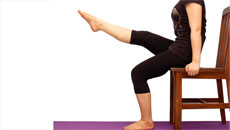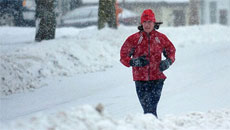Just imagine for a second that you are sitting next to a woman who has just found out that she has been diagnosed with stage four-breast cancer. You are at a loss for words because ultimately there is nothing you can say that will ease her fear or burden. She shares with you something very personal during her devastation. She tells you something that no one wants to hear.
“That if she had been tested regularly, they would’ve caught it earlier and possibly saved her life…now it was too late.”
Now, STOP imagining and know for sure that this woman is someone you know – your neighbor, your friend, your cousin, your sister, your aunt, your mom, your grandma and maybe even you.
Cancer is a disease that starts in our cells. Our bodies are made up of millions of cells, grouped together to form tissues and organs such as muscles and bones, lungs, and the liver. Genes inside each cell order it (the cell) to grow, work, reproduce and die. Normally, our cells obey these orders and we remain healthy. However, sometimes the instructions are mixed up, causing the cells to form lumps or tumors, or spread through the bloodstream and lymphatic system to other parts of the body.
Tumors can either be benign (non-cancerous) or malignant (cancerous). Benign tumor cells stay in one place in the body and are usually not life threatening. Malignant tumor cells are able to invade nearby tissues and spread to other parts of the body. Cancer cells that spread to other parts of the body are called metastases.
The first sign that a malignant tumor has spread (metastasized) is often swelling of nearby lymph nodes, but cancer can metastasize to almost any part of the body. This brings us to the point of this CALL TO ACTION…IT IS IMPORTANT TO FIND MALIGNANT TUMORS AS EARLY AS POSSIBLE.
Increasing numbers of women are diagnosed with both breast and cervical cancer each year, and amongst those numbers, the South Asian study results paint a disturbing trend. Many South Asian women neglect to regularly see their physicians for routine cancer screening exams.
We’re all good at making excuses when it comes to taking care of ourselves and for most of us, due to our busy lives our health is last on our priority list. We need to reach out to the South Asian community and let them know the importance of the testing.
The Canadian Cancer Society is doing there part with a program called,‘SIRF DUS’ (Just 10). Health Promotion Coordinators like Mandeep Sandhu of the Canadian Cancer Society visit local Sikh Temples, Ladies parties and other women’s events in the home and anywhere South Asian women will listen. Sandhu and other Health Promotion Coordinators learn about these events through word of mouth and then ask for a simple invitation to share their message. All they ask for is just 10 minutes of these women’s time in hopes of educating them in Punjabi about the importance of being screened. They close their 10-minute seminar by asking each woman to tell 10 other women about what they have learned.
Sandhu,tells Darpan Magazine that “She sees a real disconnect in the South Asian community. The common sentiment amongst many of the women she has come across seems to be that if it is inevitable that they are going to get it, why search for it? Now this fatalistic attitude may seem ludicrous to you or I, but keep in mind many of these women have strong cultural beliefs that are rooted in a fate based approach to life.
Sandhu says there seems to be a general lack of conversation around survivors. There is also a general perception that South Asians want to create a façade that everything is ok in their families. There seems to be a general lack of support in the community when someone is going through something. The lack of education in a common language just further mystifies the disease. Some even fear that if it is found out by other’s that Cancer is in their genetics it may ruin future marriage prospects for their daughters.
Here are some common excuses you will hear, and here’s a response.
1. I have no symptoms, so why do I need to be tested?
You need to be tested so that you won’t have to deal with the symptoms of the disease later.
2. I am not sure which tests I should ask for.
Two vital tests are the Pap Smear and Mammogram. The Pap Smear is a vital test for all women. The test can detect abnormal cervical changes long before they become can cancerous. A Mammogram is the process of using low-dose amplitude-X-rays to examine the human breast and is used as a diagnostic and a screening tool. The goal of mammography is the early detection of breast cancer.
3. I am afraid that the tests will hurt.
A mammogram equals minimum pain. You stand in front of a special x-ray machine. The person who takes the x-rays, called a radiologic technician, places your breasts, one at a time, between an x-ray plate and a plastic plate. These plates are attached to the mammogram machine and compress the breasts to flatten them. This spreads the breast tissue out to obtain a clearer picture.
You will feel pressure on your breast for a few seconds. It may cause you some discomfort; you might feel squeezed or pinched. This feeling only lasts for a few seconds, and the flatter your breast, the better the picture. Most often, two pictures are taken of each breast — one from the side and one from above. A screening mammogram takes about 20 minutes from start to finish.
It generally will not hurt to get a Pap smear. The doctor does have to use a speculum to open the vaginal canal, which can cause a bit of pressure. Then, a small brush or cotton tipped stick will be rubbed on the cervix. This should not hurt; it could be slightly uncomfortable though because they are rubbing with enough pressure to remove some cells from the surface of the cervix. Most women would not call getting a pap smear a painful experience.

4. I am a virgin and do not want to be implicated with sexual activity.
The only way to lose your virginity is to have a sexual experience, not by having a Pap smear. A Pap smear is a simple and painless test for cervical cancer.
5. These tests can cost a lot of money; I am on a limited income.
Both these tests are available at no cost to the patient.
6. My family is busy and I don’t want to burden them with taking me to be screened.
You are assuming that they will feel burdened. If explained to your family the importance of being screened, they value your health and are more than willing to drive you. If you cannot rely on family reach out to a friend, or a neighbor, encourage them to be tested as well. People are more willing to help than we give them credit for, especially if it may save a life.
7. I don’t want to be tested because if I am going to die I just will.
Do you cross the street without looking? Do you go in a car without your seatbelt? Think about all the other things that you do to prevent your mortality. Yes we are all going to die one day, but if you can avoid a premature death would you not want to at any cost These are just a few of the factors that contribute to under screening.
Cancer is rampant, which makes it not only scary, but it also desensitizes us.
When we hear someone has been diagnosed with cancer, it just does not seem as shocking as it used to. Even when the statistics are so high and cancer has impacted almost everyone’s life within three degrees of separation many of us continue to make the choice of not being tested.
If each person that reads this article takes just ONE woman to be tested, even if that one woman is YOU, think about the sheer number of lives that could be saved. If you are a man give the women in your life a gift, urge them to make the appointment, or make it for them. The Canadian Cancer Society, DARPAN Magazine, I as a woman, call you to take action!
Cervical Cancer
Incidence
It is estimated that 1300 new cases of cervical cancer will be diagnosed in Canada in 2010. The lifetime probability of a woman developing cervical cancer in Canada is 1 in 148.
Mortality
It is estimated that 370 deaths from cervical cancer will occur in Canada in 2010. The lifetime probability of a woman dying from cervical cancer in Canada is 1 in 423.
Breast Cancer
Incidence
The lifetime probability of a woman developing breast cancer in Canada is 1 in 9.
Mortality
The lifetime probability of a woman dying from breast cancer in Canada is 1 in 28.






